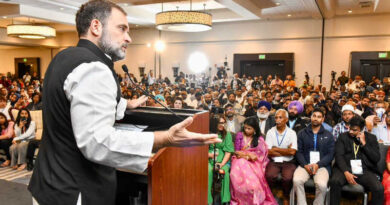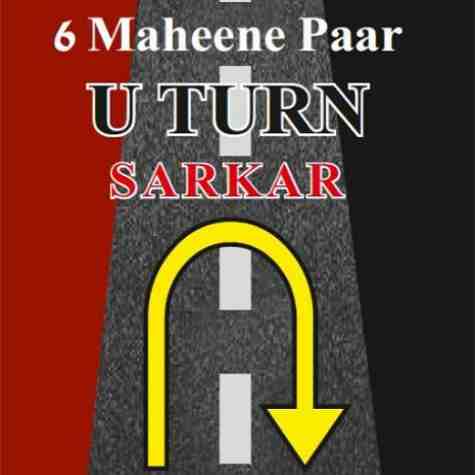National Herald Money Laundering Case: A Study Guide

National Herald Money Laundering Case: A Study Guide
Key Concepts and Summary
The article from RMN News reports on a significant development in the long-running National Herald case. The Enforcement Directorate (ED) in India has filed a chargesheet against Sonia Gandhi, Rahul Gandhi, and others, alleging money laundering involving ₹5,000 crore.
The core of the allegation is that the Gandhis engaged in a criminal conspiracy to usurp the assets of Associated Journals Ltd (AJL), the publisher of the National Herald newspaper. This was purportedly achieved by transferring 99% of AJL’s shares to Young Indian, a company controlled by the Gandhis, for a mere ₹50 lakh. The ED claims the current market value of these assets is ₹5,000 crore.
The chargesheet names five individuals and two companies, including Young Indian, as accused. It details how a ₹90.21 crore loan from the Congress party to AJL was converted into equity shares and subsequently transferred to Young Indian, allegedly making Sonia and Rahul Gandhi the beneficial owners of AJL’s substantial properties.
The ED states it possesses documentary evidence of the money trail and transactions. The agency has previously questioned the Gandhis and others involved. Furthermore, the ED has initiated proceedings to seize ₹750 crore worth of AJL properties.
The case originated from a 2013 petition. Both Sonia and Rahul Gandhi had previously attempted to have the ED proceedings quashed and are currently on bail. The ED is seeking their punishment under the Prevention of Money Laundering Act (PMLA). A special court is scheduled to consider the chargesheet on April 25, which will be a crucial step in determining whether criminal charges are framed and a trial commences. The ED also noted that Young Indian, while claiming to be a “not-for-profit” company, allegedly engaged in no charitable activities.
Quiz
- What is the main allegation made by the Enforcement Directorate (ED) in the National Herald case as reported by RMN News?
- According to the chargesheet, what was the stated value of the proceeds of crime involved in the alleged money laundering?
- Explain the role of Young Indian in the National Herald case as per the RMN News report.
- What was the amount for which 99% of Associated Journals Ltd (AJL)’s shares were allegedly transferred to Young Indian? What is the estimated current market value of AJL’s assets?
- Who are some of the key individuals, besides Sonia and Rahul Gandhi, named in the ED’s chargesheet according to the article?
- What legal provision of the Prevention of Money Laundering Act (PMLA) has the ED reportedly invoked against the accused? What is the potential consequence under this section?
- What was the nature of the loan provided by the Congress party to Associated Journals Ltd (AJL) that is central to the ED’s allegations?
- What is the significance of the upcoming hearing scheduled for April 25 as mentioned in the article?
- According to the ED, what was allegedly inconsistent about Young Indian’s claim of being a “not-for-profit” company?
- Who initially filed the petition in 2013 that led to the investigation into the National Herald affairs?
Quiz Answer Key
- The ED alleges that Sonia Gandhi, Rahul Gandhi, and others engaged in a criminal conspiracy to usurp the assets of Associated Journals Ltd (AJL) through money laundering, with proceeds of crime worth ₹5,000 crore.
- The chargesheet alleges proceeds of crime worth ₹5,000 crore.
- Young Indian is a firm controlled by the Gandhis to which 99% of AJL’s shares were allegedly transferred for a nominal sum of ₹50 lakh, giving the Gandhis control over AJL’s assets.
- 99% of AJL’s shares were allegedly transferred for ₹50 lakh. The current market value of these assets is estimated at ₹5,000 crore.
- Besides Sonia and Rahul Gandhi, the chargesheet reportedly names Sam Pitroda and Suman Dubey as individuals, along with the companies Young Indian and AJL.
- The ED has sought punishment under Section 4 of the Prevention of Money Laundering Act (PMLA), which can carry a jail term extending up to seven years.
- The Congress party provided a loan of ₹90.21 crore to AJL, which the ED alleges was fraudulently converted into equity shares and then transferred to Young Indian.
- The hearing on April 25 is when the special court will decide whether to take cognisance of the chargesheet, which is a critical step towards potentially framing criminal charges and initiating a trial.
- The ED reportedly found that despite being listed as a “not-for-profit” company, Young Indian allegedly engaged in no charitable activities.
- The petition in 2013 was filed by former minister Subramanian Swamy.
Essay Format Questions
- Critically analyse the Enforcement Directorate’s allegations against Sonia and Rahul Gandhi in the National Herald money laundering case as presented in the RMN News report. Discuss the key pieces of evidence or claims highlighted in the article.
- Examine the sequence of events that allegedly led to the transfer of Associated Journals Ltd (AJL)’s assets to Young Indian, as detailed in the RMN News report. What were the key transactions involved, and what is the ED’s interpretation of these events?
- Discuss the legal implications of the Enforcement Directorate filing a chargesheet in the National Herald case. What are the potential next steps in the legal proceedings, and what factors might influence the outcome?
- Assess the significance of the National Herald case in the broader political context of India, considering the involvement of prominent leaders from the Indian National Congress. How might this case impact the political landscape?
- Evaluate the role of news media, such as RMN News, in reporting on ongoing legal cases with political implications. What are the potential benefits and drawbacks of such reporting?
Glossary of Key Terms
- Enforcement Directorate (ED): An Indian government agency responsible for enforcing economic laws and fighting economic crime in India.
- Chargesheet: A formal written accusation of a crime, filed in a court by the police or investigating agency after the completion of an investigation. In this article, it is referred to as a “prosecution complaint”.
- Money Laundering: The process of concealing the origin of illegally obtained money, making it appear legitimate.
- Proceeds of Crime: Any property derived from or obtained, directly or indirectly, by any person as a result of criminal activity.
- Criminal Conspiracy: An agreement between two or more persons to commit an illegal act.
- Usurp: To take (a position of power or importance) illegally or by force; in this context, alleged illegal seizure of assets.
- Associated Journals Ltd (AJL): The company that publishes the National Herald newspaper.
- Young Indian: A private company in which Sonia Gandhi and Rahul Gandhi reportedly hold a controlling stake.
- Equity Shares: A type of share that represents ownership in a company.
- Beneficial Owner: The natural person(s) who ultimately own or control a legal entity or arrangement.
- Money Trail: The sequence of transactions and movements of money that can be traced to determine its origin and destination.
- Documentary Evidence: Evidence in the form of documents, such as contracts, financial records, and correspondence.
- Prevention of Money Laundering Act (PMLA): An Indian law enacted to prevent money laundering and to provide for the confiscation of property derived from, or involved in, money laundering.
- Not-for-Profit: An organisation that does not operate for the purpose of generating a profit and does not distribute its surplus funds to its owners or shareholders.
- Cognisance: The act or fact of knowing; judicial notice or acknowledgement of a matter. In this context, the court deciding whether to formally take up the chargesheet for consideration.
RMN News: You can click here to read more news stories on RMN News, which is a premium international news site for global readers and other stakeholders. Rakesh Raman is the Managing Editor of RMN News.






